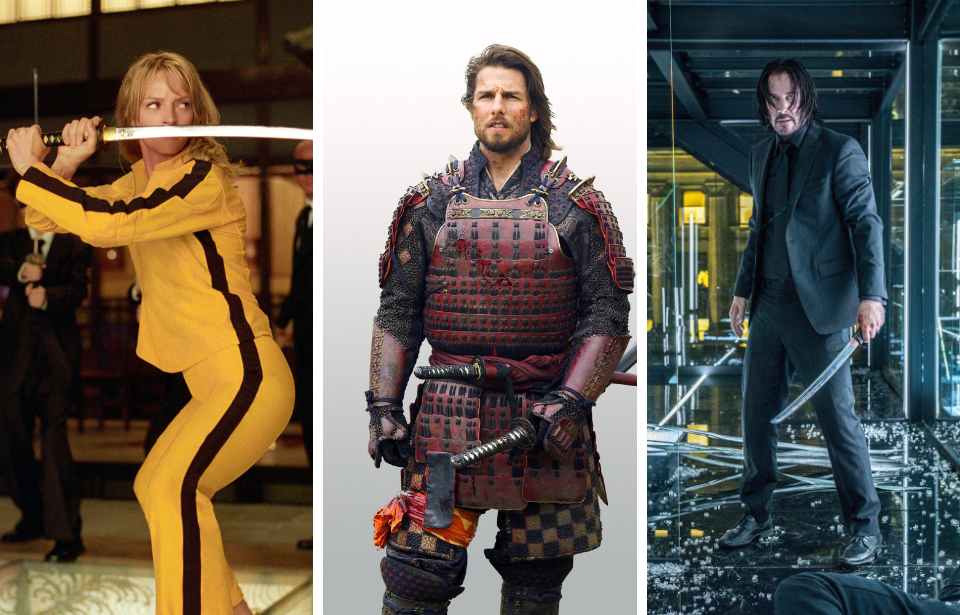Movies about samurai who’ve mastered the elements of ancient Japanese sword fighting have captivated audiences since the early days of cinema; the adventure, honor, sacrifice and skill make Japanese and American adaptations entertaining to watch. In an interview with Insider, samurai sword master and instructor Kaito Suiju looked at a number of scenes from iconic movies to debunk misconceptions and prove what it really takes to become one of Japan’s most skilled warriors.
The Sword of Doom (1966)
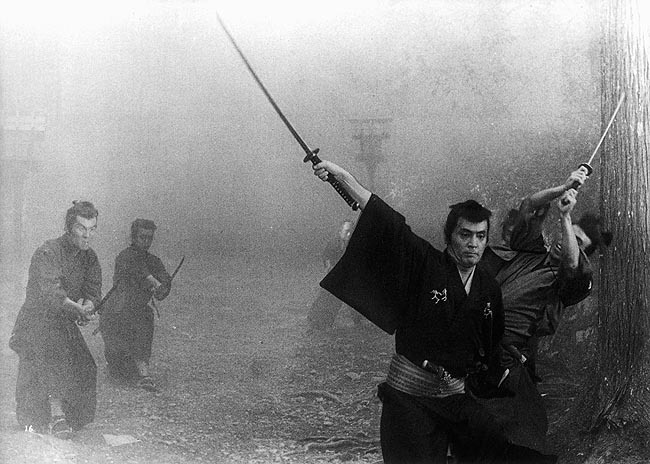
The 1966 film The Sword of Doom follows masterful samurai Ryunosuke Tsukue, who has an unorthodox approach to combat and a dark side. When another samurai challenges him, Ryunosuke accidentally kills him in self-defense and is forced to flee. He becomes a rōnin, a samurai with no master, and is hired by a military leader as an assassin – the more people he kills, the more distant and emotionless he becomes.
Kaito Suiju’s provides commentary on the scene where Ryunosuke is approached by several assailants in a forest. He slows his pace and starts suri-ashi movements, a slow shuffle used by a samurai to keep his hand on his katana’s hilt, pointing it toward enemy personnel from behind. “By doing this, your torso remains perfectly balanced,” the sword master explains.
The character then draws his katana quickly and slashes his opponent in a counterattack called nukiuchi, which Suiju says is the “art of performing a sudden surprise attack. The way he attacks and then immediately repositions himself is excellent.”
The samurai sword master gave The Sword of Doom an impressive 8/10.
The Last Samurai (2003)
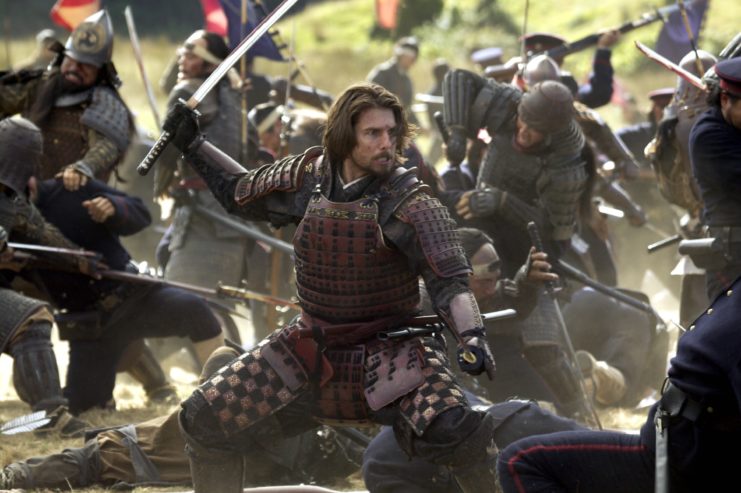
The 2003 historical epic The Last Samurai, starring Tom Cruise, follows a 19th-century US military captain who finds himself embroiled in a conflict alongside samurai warriors. The film was inspired by the 1877 Satsuma Rebellion and Westernization of Japan following the arrival of global powers like the United States.
The scene in question shows Cruise and Japanese actor Hiroyuki Sanada, who plays Ujio, a master swordsman, practice fighting with wooden katanas. Kaito Suiju explains that Ujio’s movements, behavior and eye contact are reminiscent of a real samurai, but that the use of wooden swords throws off the scene. “Up to the age of six, children would fight with wooden swords,” he says in the video. After that, if they wish to become a samurai, they use real swords.
In another scene, Suiju praises Cruise for his samurai-like movements and technique. Wielding two katanas, the actor performs a skilled sequence before cleanly slicing his enemy’s neck, something Suiju says would take between three and five years to achieve – time Cruise’s character didn’t have.
John Wick: Chapter 3 – Parabellum (2019)
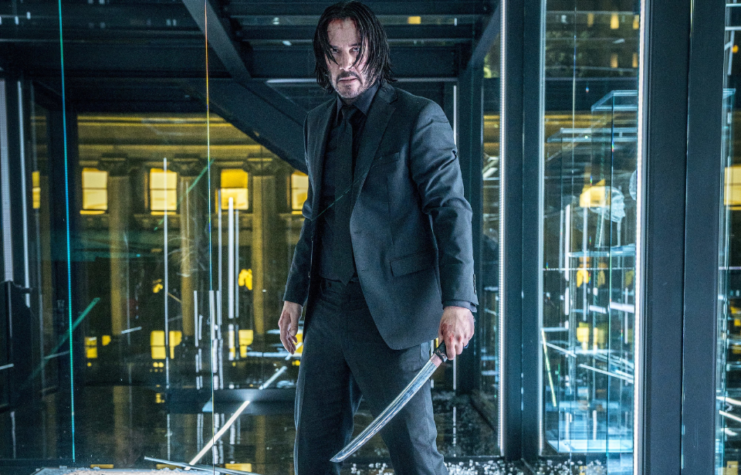
The John Wick scene in question shows Keanu Reeves fighting off a bad guy using a wakizashi, a smaller samurai sword used in close-quarter situations. The third film in the franchise, John Wick: Chapter 3 – Parabellum (2019), follows Wick take on a host of gangsters, hitmen and, in this case, a Japanese assassin.
The wakizashi allows Wick to stab and slash his target, something Kaito Suiju says is particularly effective with short swords. As the character inches the sword closer to his opponent’s chest, the Japanese assassin grabs the blade in an attempt to pull it away from Wick, which Suiju discredits, since a move like that can “almost cut your fingers off.”
Harakiri (1962)
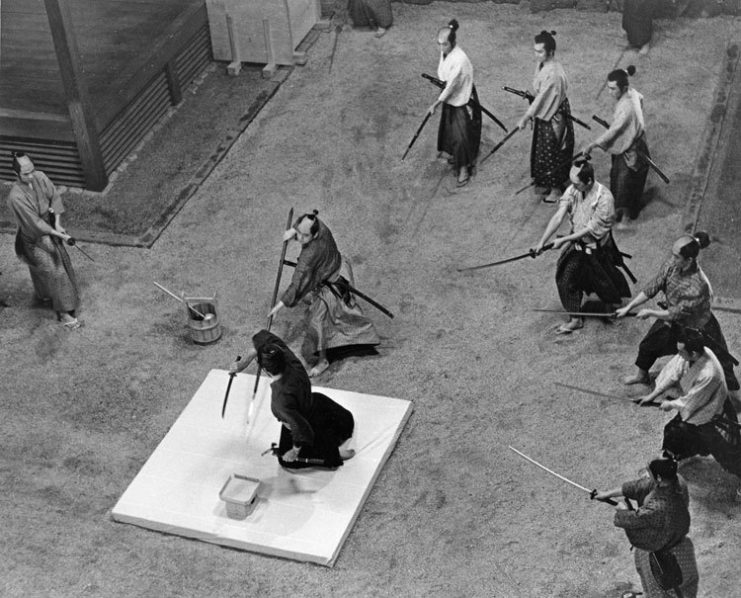
The 1962 Japanese film Harakiri, also known by the title Seppuku, is named after one of the most infamous samurai traditions: ritual suicide. This rare practice began in the 12th century as a method of death used by warriors who’d been defeated in battle and wanted to escape the dishonor that would befall them and their families. The practice can also be done if a samurai fails his duties, or to demonstrate supreme loyalty to his leader.
The film takes place between 1619-30, during the rule of the infamous Tokugawa shogunate. It follows Hanshirō Tsugumo, a rōnin who asks to commit seppuku in front of an audience of samurai. He explains how he was driven to the act, the story of which unfolds throughout the film.
Harakiri is still regarded as one of the best samurai films of all time. Kaito Suiju himself recalls seeing it in theaters when he was 16 years old and credits it with inspiring him to become a samurai.
The scene in question shows two figures about to standoff with katanas in hand. One samurai changes his stance to throw off his opponent. As he looks deep into the eyes of his target, you see sadness and longing. “Perhaps the reason I am where I am today is because I felt the heart of the samurai when I saw this film,” Suiju says, giving the scene a 9/10.
13 Assassins (2010)
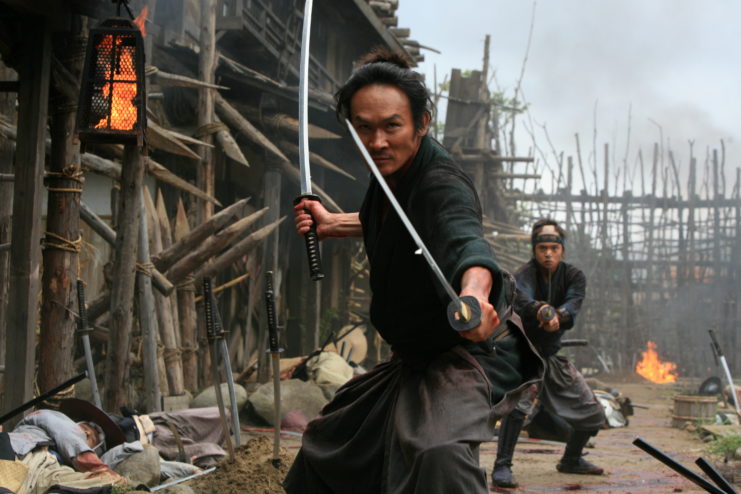
The 2010 film 13 Assassins is a remake of the original 1963 Japanese period drama. It follows 13 men, including a hunter and samurai, who are charged with tracking down a cruel man.
Kaito Suiju examines a scene from the film that shows several of the men taking on an enemy group in a small space. He discusses the advantages of fighting such a large group in a small area, blocking the enemy from attacking all at once and creating a conveyor-belt situation where the heroes can slash and cut their opponents as they approach in waves until no one remains.
One samurai takes on a handful of men wielding two swords, using them in alternating order. Suiju explains this is because using a katana in intense battles like this can leave the blade dented and dulled. By using two interchangeably, a warrior can extend the longevity of their weapons.
This accurate reflection of fighting earned 13 Assassins a 7/10.
Kill Bill Vol. 1 (2003)
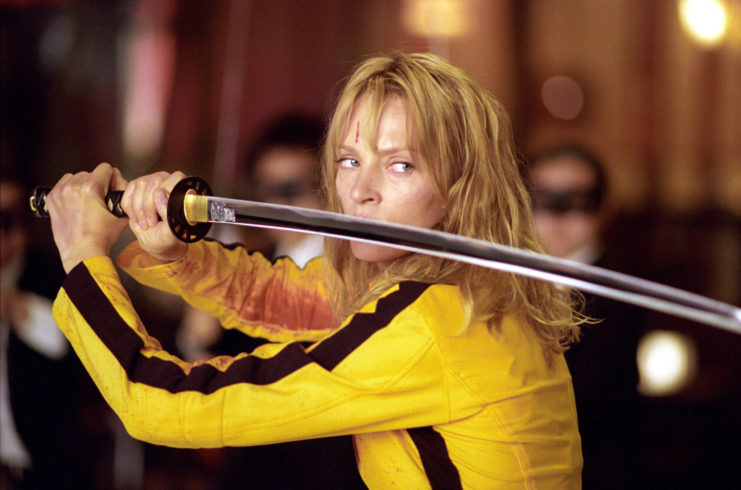
Quentin Tarantino’s epic action flick Kill Bill: Vol. 1 (2003) brought the katana to the big screen in an entirely new way. Starring Uma Thurman, the film follows one woman’s fight for revenge against the syndicate of assassins she once worked for.
The scene in question opens with several Japanese men sitting in front of a Shinto shrine. “Japanese swords are said to be inhabited by the gods,” Kaito Suiju explains, highlighting the spiritual aspects of being a samurai. In another scene, Lucy Liu’s character, O-Ren Ishii, wearing a white kimono, draws a katana from its sheath in preparation for a fight.
Suiju states Kill Bill depicted the proper way to draw a katana, showing off its craftsmanship He also explains that O-Ren Ishii’s “slow, dignified movements” help highlight the feeling that “the woman in the white kimono will be the winner, by the way she moves and carries herself […] Weak samurai, weak people move too quickly […] By moving slowly, you create fewer weak points.”
The Samurai sword master rated the scene and its impressive choreography a 7/10.
Yojimbo (1961)
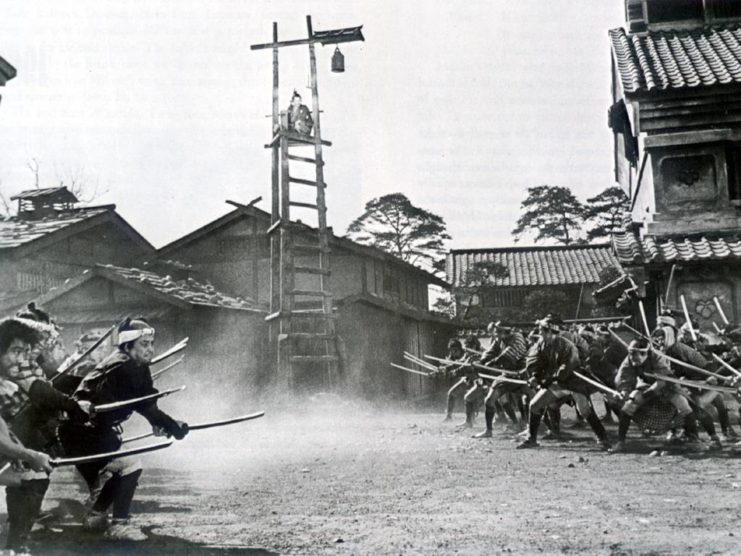
The 1961 Japanese film Yojimbo follows a rōnin after he arrives in a village where crime lords battle for supremacy. Two of them begin feuding over the samurai, who they each want to hire as their yojimbo – or bodyguard.
In the scene shown in the video, the rōnin is approached by ten yakuza, led by a crime boss wielding a handgun. Kaito Suiju explains that, when fighting an opponent with a gun, it’s important to move from side to side, to avoid being shot head-on. As the gunman attacks, the rōnin throws one of his shorter knives and lands the blade in his enemy’s arm, mimicking a shuriken, or what the Western world calls a “ninja star.”
“When I saw it a long time ago, I remember thinking that this idea, or, rather, this technique of using this knife as a shuriken, is amazing. If you carry a sword, even if five or 10 yakuza come at you, you will always win if you are an expert,” Suiju shares. The rōnin manages to take on the yakuza, even leaving one of them shouting, “Mommy!”
This powerful scene prompted Suiju to award it a 9/10.
Rurouni Kenshin Part 1: Origins (2012)
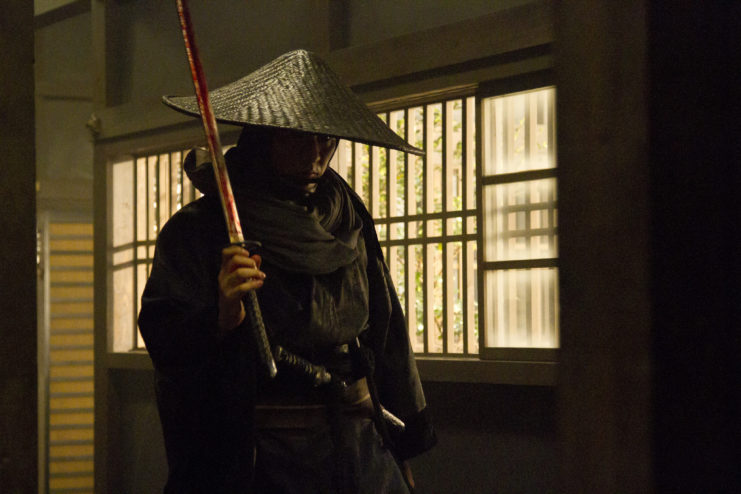
Rurouni Kenshin Part 1: Origins (2012) is the first in a series of Japanese films based on the manga series of the same name. It follows a wanderer named Kenshin Himura – also known as the assassin Hitokiri Battōsai – who retires to the countryside seeking forgiveness for the murders he committed and vowing to never kill again.
The scene being examined shows a samurai fending off attackers in front of a dojo, using a combination of katana skills and jiujitsu. Even after Kenshin staves off the attackers, he manages to take a respectful bow while entering the structure. Many dojos contain Shinto shrines, which is why bowing is important. “Since the beginning of the Edo period, the dojo has simply been thought of as a place for practicing swords and fighting, but it is actually a place to train a human being,” Kaito Suiju explains.
While in the dojo, the fighting continues as Kenshin brings his katana down toward the forehead of an attacker, before stopping at the last second to hover the blade over his target. “This is not a move that can be done easily… It’s very difficult to aim so precisely and stop just before you hit,” Suiju explains.
“By nature, samurai do not draw their swords recklessly,” he continues. “Here, because this young samurai is so skilled, he is able to beat his opponent using jiujitsu, rather than pulling out his sword. But, in reality, I think this would be quite difficult.”
Watch the video!
More from us: US Army Ranger ‘The Reaper’ Reacts to 11 Sniping Scenes from Popular War Movies – and It’s Rough!
Now that we’ve given you an overview of what Kaito Suiju thinks of the aforementioned films, we highly recommend watching the video. Not only does he cover additional movies, he provides even more insight on what makes a samurai film authentic.
